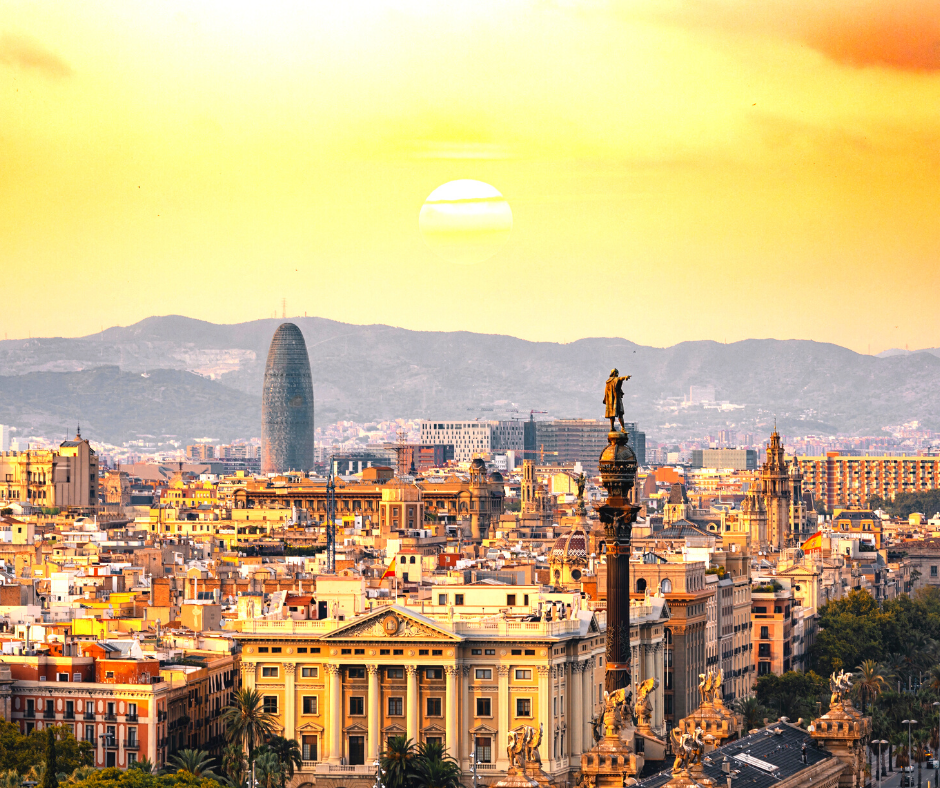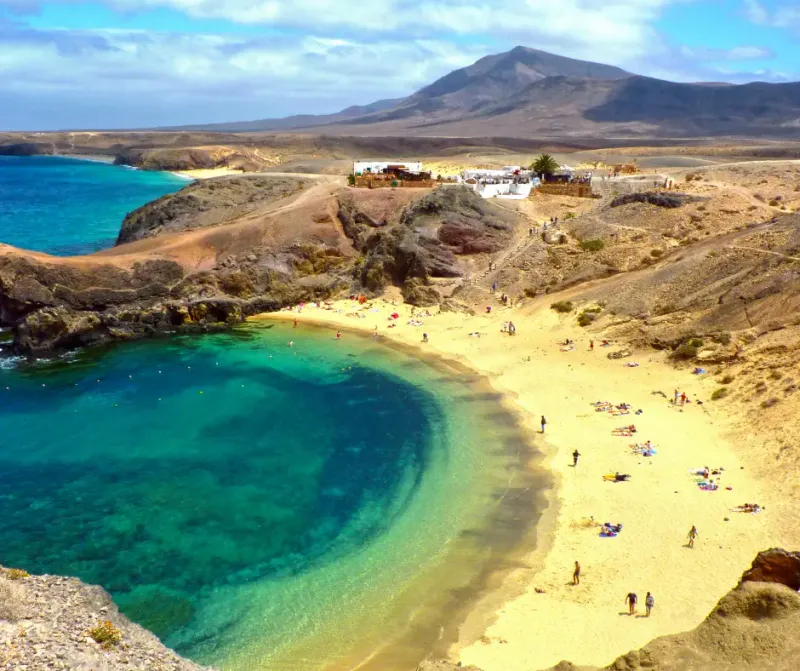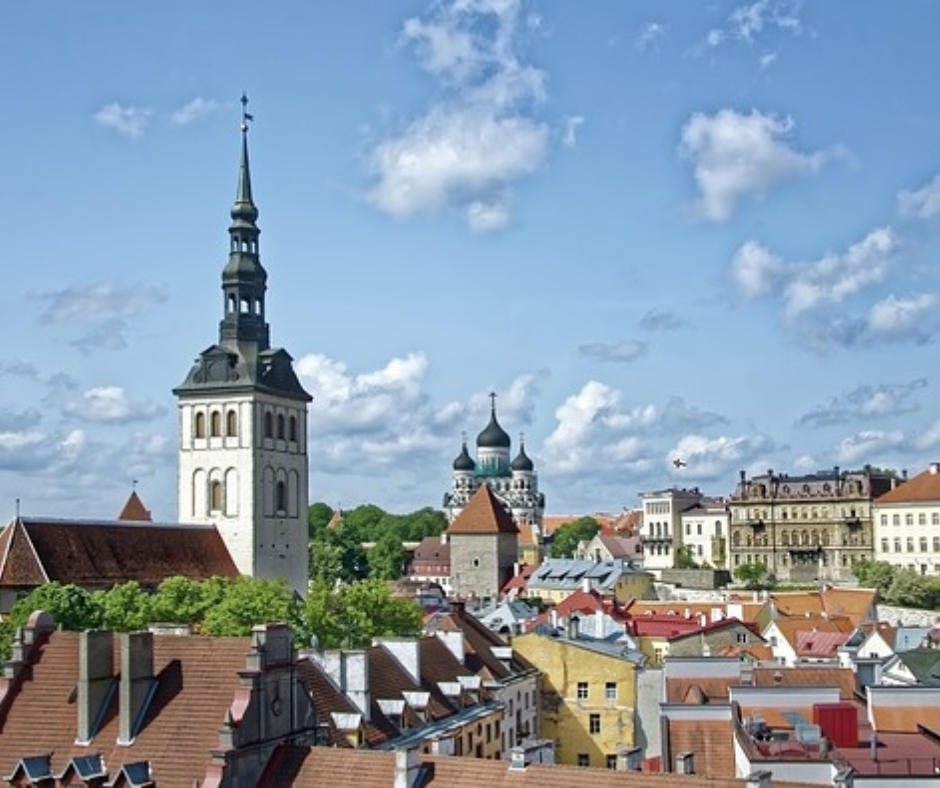The Canary Islands, located off the northwest coast of Africa, are a Spanish archipelago known for their breathtaking natural beauty, diverse landscapes, and year-round mild climate.
Comprising seven main islands, including Tenerife, Gran Canaria, Lanzarote, and Fuerteventura, the Canary Islands offer a unique blend of stunning beaches, volcanic landscapes, lush forests, and charming towns. The islands were formed through volcanic activity millions of years ago. Mount Teide on Tenerife is the highest peak in Spain and a UNESCO World Heritage site.
Thanks to their location, the Canary Islands enjoy mild temperatures throughout the year, making them an ideal destination for sun-seekers and outdoor enthusiasts.
🌱 Travel health insurance for the Canary Islands
💡
Genki Traveler is a travel health insurance with worldwide cover. Monthly payment plans, and easy signup in less than 1 minute.
The table of content will be generated here
🇮🇨 Entry requirements for the Canary Islands
- Visa: Valid Schengen visa.
- Insurance: Travel health insurance that matches the Schengen requirements. Your insurance policy needs a minimum amount of 30,000 Euros of emergency cover.
✈️ How to get to the Canary Islands
- Flights: The most common and convenient way to reach the Canary Islands is by air. There are international airports on the major islands, including Tenerife with two Tenerife South (TFS) and Tenerife north airport (TFN), Gran Canaria (LPA), Lanzarote (ACE), and Fuerteventura (FUE), which receive direct flights from various European cities.
- Ferry: If you prefer a more scenic and leisurely journey, you can opt to travel by ferry. There are ferry services that connect the Canary Islands with mainland Spain and other neighboring countries, such as Morocco. This option allows you to enjoy the sea voyage and take in beautiful coastal views.
- Cruise: Another way to reach the Canary Islands is by taking a cruise. Many cruise lines offer itineraries that include stops at the major ports in the Canary Islands. This can be a relaxing and enjoyable way to reach the islands while also experiencing the amenities and activities on board the cruise ship.
🏡 How to find a place
- Airbnb: You can find here, a wide range of short-term rental options, including apartments, studios, and shared spaces. You can filter your search based on location, price, and specific amenities to find an accommodation that suits your needs. Make sure to read reviews and communicate with the host to ensure a smooth stay.
- Social Media Groups: Joining Facebook groups or online communities dedicated to housing in the Canary Islands can be helpful. Check Accommodation for Digital Nomads in Gran Canaria, or Tenerife coliving & coworking, remote workers & digital nomads community
- Co-living Spaces: Co-living spaces are becoming increasingly popular among digital nomads. These spaces provide a combination of private rooms or apartments and shared common areas, allowing you to have your own space while also fostering a sense of community. Check out Nine Coliving, Maraya Coliving in Tenerife or COWORKSURF Fuerteventura.
🚌 Public transport
- Buses: Buses are the most common and convenient mode of public transportation on the islands. Each island has its own bus network, with regular routes connecting major towns, tourist areas, and attractions. Bus services are usually reliable, and affordable, and offer a comfortable way to explore the islands.
- Taxis: Taxis are widely available in the Canary Islands, particularly in urban areas and at airports. They provide a convenient and efficient mode of transportation, especially for shorter distances or when traveling with heavy luggage. Taxis operate on a metered fare system, and it's advisable to ensure the driver activates the meter at the beginning of the trip.
- Ferries: As the islands are geographically spread out, ferry services are essential for inter-island travel. Ferries connect the main islands, such as Tenerife, Gran Canaria, Lanzarote, and Fuerteventura, allowing travelers to easily hop between them. Ferry services offer both passenger-only options and those that accommodate cars and bicycles.
- Trams: Some of the larger cities, such as Las Palmas de Gran Canaria and Santa Cruz de Tenerife, have tram systems that provide a convenient way to navigate within the city. Trams are a popular mode of transportation for commuting and exploring urban areas.
- Rental Cars: Renting a car is a popular option for those who prefer more flexibility and independence in their transportation. All of the main islands have car rental agencies, and having a car allows you to explore remote areas, scenic routes, and hidden gems at your own pace.
🏘 Where to stay in Tenerife
- Santa Cruz de Tenerife: As the capital city of Tenerife, Santa Cruz de Tenerife is a bustling and cosmopolitan area with a range of amenities for digital nomads. It has a vibrant cultural scene, modern infrastructure, and numerous coworking spaces, cafes, and restaurants with reliable internet connections. The city also hosts events and conferences related to technology and entrepreneurship.
- La Laguna: Located near Santa Cruz de Tenerife, La Laguna is a historic town with a charming atmosphere and a thriving student community. It offers a mix of old-world charm and modern conveniences, with its well-preserved architecture and a variety of shops, cafes, and coworking spaces. La Laguna is known for its cultural heritage and lively atmosphere, making it an inspiring place for digital nomads.
- Costa Adeje: Situated on the southern coast of Tenerife, Costa Adeje is a popular tourist area known for its stunning beaches and upscale resorts. Despite its tourist-oriented nature, Costa Adeje also offers facilities that cater to digital nomads. The area has coworking spaces, cafes with Wi-Fi, and a range of recreational activities to enjoy during leisure time.
- Puerto de la Cruz: Located on the northern coast of Tenerife, Puerto de la Cruz is a picturesque town with a relaxed and bohemian ambiance. It has beautiful beaches, natural pools, and a charming old town. Digital nomads can find coworking spaces, cafes, and tranquil spots to work while enjoying the town's laid-back vibe.
🧑🏻💻 Where to work from in Teneriffe
Coworking spaces
- Chill Co-Working: Close to Costa Adeje you can find Chill Co-Working which offers a spacious and well-lit environment, furnished with comfortable seating, and equipped with modern amenities. It attracts a diverse and amiable community of professionals from different fields and backgrounds. The space organizes frequent events, workshops, and networking sessions to encourage collaboration, skill development, and personal growth. Monthly membership costs €135.
- Coworking in the Sun: Located in Puerto de la Cruz, the boutique coworking space is a popular go-to space for digital nomads combining surf and work. The space runs a cafeteria but also has a fully equipped kitchenette and even a soundproof room for music or video production. Monthly membership is available for €150.
- Nine Coliving & Coworking: Whether you are looking for a beautiful living roof, a reliable and comfortable workspace, a community, weekend adventures, or just a little sunshine, Nine welcomes you to join. The coliving space is located in Santa Cruz de Tenerife and offers a beautiful view of the sea and the town. They also have high-speed internet, 24/7 access, and a fully equipped workspace. The coworking is only available for guests staying at Nine.
Coffee shops
- Café Mimi: Located in the heart of Tenerife, Cafe Mimi is a charming boutique cafe with a cozy atmosphere, comfortable seating, and a tranquil ambiance. It offers a range of delicious coffee and tasty treats, making it an ideal spot for digital nomads to work from. The cafe provides free wifi and has power outlets available for convenient use.
🏘 Where to stay in Fuerteventura
- Corralejo: Located on the northern tip of the island, Corralejo is a popular town among digital nomads. It has a vibrant atmosphere, beautiful beaches, and a wide range of amenities. You'll find coworking spaces, cafes, restaurants, and shops within walking distance, making it convenient for work and leisure activities.
- Caleta de Fuste: Situated on the east coast of Fuerteventura, Caleta de Fuste is a tranquil coastal town that attracts digital nomads seeking a more laid-back lifestyle. It offers a picturesque harbor, sandy beaches, and a variety of accommodation options. The town also has amenities like supermarkets, restaurants, and cafes, making it a comfortable place to live and work.
- Morro Jable: Located in the southern part of the island, Morro Jable is known for its stunning beaches and relaxed vibe. It's a great choice for digital nomads who appreciate a quieter and less crowded environment. The town offers a few coworking spaces, as well as local cafes and restaurants where you can work while enjoying the scenic views.
- El Cotillo: Situated on the northwest coast of Fuerteventura, El Cotillo is a charming fishing village with a bohemian atmosphere. It's a perfect spot for digital nomads who value peace and serenity. El Cotillo boasts beautiful beaches, a small selection of cafes, and a tranquil ambiance that fosters concentration and productivity.
🧑🏻💻Where to work from in Fuerteventura
Coworking spaces
- Coworking Fuerte: Located in Morro Jable the coworking spaces provide the perfect mix of work and surf. The superfast high-speed internet, Bar area with a cafeteria, and 24/7 access are making this spot a reliable go-to hub for digital nomads visiting Fuerteventura. The individual desk is available for €300 per month.
- Cofete Coworking: The coworking space is located in Corralejo and comes with high-speed internet access, fully equipped working stations, and even discounts for Surf Lessons or equipment rentals. Monthly membership costs €130.
Coffee shops
- El Goloso Coffee Shop: Situated in the heart of Puerto del Rosario, El Goloso Coffee Shop is a popular choice among locals and visitors alike. This cozy cafe boasts a warm ambiance, excellent coffee, and a menu of homemade treats. The friendly staff creates a welcoming environment for digital nomads looking for a comfortable and inspiring place to work.
🏘 Where to stay in Gran Canaria
- Las Palmas de Gran Canaria: As the capital city of Gran Canaria, Las Palmas is a vibrant and bustling hub that attracts digital nomads. It offers a wide range of coworking spaces, cafes with reliable Wi-Fi, and a lively atmosphere. The neighborhoods of Vegueta and Triana are particularly popular among digital nomads, with their charming streets, cultural sites, and ample amenities.
- Maspalomas: Located in the southern part of the island, Maspalomas is known for its stunning sand dunes, beautiful beaches, and resort-like atmosphere. It offers a mix of relaxation and work opportunities, with coworking spaces, cafes, and beachfront hotels. The area of Meloneras, in particular, is popular among digital nomads for its luxury resorts and quieter environment.
- Playa del Inglés: Adjacent to Maspalomas, Playa del Inglés is another popular destination for digital nomads. It offers a lively nightlife scene, beautiful beaches, and a variety of accommodation options. The area has several coworking spaces and cafes where you can work while enjoying the vibrant atmosphere.
- Puerto de Mogán: Located on the southwest coast of the island, Puerto de Mogán is a picturesque coastal town known as "Little Venice" due to its charming canals and colorful houses. It offers a more relaxed and tranquil environment, making it an ideal choice for digital nomads seeking a peaceful setting. The town has a few coworking spaces and cafes where you can work while enjoying the scenic views.
- Agaete: Situated on the northwest coast of Gran Canaria, Agaete is a charming village known for its natural beauty and tranquility. It offers a slower pace of life, making it an attractive option for digital nomads seeking a peaceful and laid-back environment. The village has a few cafes and coworking spaces where you can work while enjoying the serene surroundings.
🧑🏻💻Where to work from in Gran Canaria
Coworking spaces
- Coco Tropical Coworking: Situated in the heart of Las Palmas, Coco Coworking provides a boutique workspace designed to inspire productivity and creativity. With its vibrant and contemporary ambiance, it offers various membership options, including flexible desks, free fruits, tea and coffee flow, fast wifi and 24/7 access. Monthly membership costs €160 for unlimited access.
- The House: Located in the vibrant neighborhood of Triana in Las Palmas, The House Coworking is a boutique workspace known for its stylish and comfortable setting. It offers flexible workstations, private offices, meeting rooms, and a communal kitchen area. The space also hosts regular networking events and workshops to facilitate connections and skill sharing. Monthly membership costs €250.
Coffee shops
- Benito Roof Cocktail Bar: Situated in the charming neighborhood of Vegueta in Las Palmas, Benito is a boutique cafe with a rooftop terrace offering beautiful views of the historic surroundings. It provides a peaceful and inspiring setting for work, with ample seating and a tranquil ambiance. They serve a range of beverages, including specialty coffees, teas, and refreshing cocktails, as well as a menu of light bites and desserts.
🚊 How to travel around the Canary Islands
- Car Rental: Renting a car is a popular option for exploring the Canary Islands independently. It provides flexibility and allows you to visit remote areas and hidden gems. Major car rental companies like Europcar, Hertz or Sixt are available at the airports and main tourist areas of each island. Local company is Cicar.
- Public buses: Each island in the Canary Islands has its own public bus network, providing affordable transportation between towns, cities, and popular tourist destinations. The buses are well-maintained, reliable, and offer regular schedules. It's a convenient option for traveling short to medium distances.
- Taxis: Taxis are readily available on all the islands and can be hailed on the street or found at designated taxi ranks. Taxis are metered, and rates may vary slightly between islands.
- Ferries: As the Canary Islands are an archipelago, ferries play a significant role in inter-island transportation. They connect the main islands, such as Tenerife, Gran Canaria, Lanzarote, Fuerteventura, La Palma, and more. Ferries offer both passenger and car transportation, allowing you to explore multiple islands during your visit.
- Plane: Domestic flights are available between the major airports of the Canary Islands, making air travel a convenient option for longer distances or if you want to visit more distant islands. Several airlines operate regular flights, providing quick and efficient connections between the islands.
🎖Must see
- Teide National Park (Tenerife): Home to Mount Teide, the highest peak in Spain, this national park is a UNESCO World Heritage site. Marvel at the volcanic landscapes, take a cable car ride to the summit and enjoy breathtaking views of the surrounding area. The ticket price is around €22.
- Masca (Tenerife): Visit the picturesque village of Masca, nestled in a breathtaking gorge on the northwest coast of Tenerife. Known for its stunning views and traditional architecture, it offers excellent hiking opportunities and a glimpse into the island's rural charm.
- Playa de Maspalomas (Gran Canaria): Relax on the famous sand dunes of Maspalomas, a natural reserve located on the southern coast of Gran Canaria. This unique landscape offers a combination of sandy beaches, rolling dunes, and crystal-clear waters.
- Timanfaya National Park (Lanzarote): Explore the otherworldly landscapes of this volcanic park, known for its lunar-like terrain, geothermal activity, and unique rock formations. The entrance fee is €12.
- Caldera de Taburiente National Park (La Palma): Discover the natural beauty of this stunning national park, which features a massive volcanic crater surrounded by lush forests, deep ravines, and waterfalls. Hiking trails provide opportunities to explore the park's diverse ecosystems. Entrance here is free. Hiking tours can be checked here.
- Santa Cruz de La Palma (La Palma): Visit the capital city of La Palma, known for its colonial architecture, colorful houses, and charming streets. Explore the historic quarter, admire the ornate balconies, and visit the lively marketplace.
- Cueva de los Verdes (Lanzarote): Explore this unique underground lava tube formed by volcanic activity. Take a guided tour through the cave system, marvel at the colorful rock formations, and learn about the island's geological history. There is no bus service, so for getting there, we advise a private car, guided tour, or taxi ride.
- Garajonay National Park (La Gomera): Immerse yourself in the ancient laurel forests of this national park, a UNESCO World Heritage site. Explore the well-maintained hiking trails, discover cascading waterfalls, and encounter unique flora and fauna. For me, La Gomera had beautiful landscapes from lush forests and rocky volcanic trails to Auenland-vibes.
💡Good to know
- Internet: The Canary Islands offer reliable internet connectivity for digital nomads, with an average download speed of 99.22 Mbps and an upload speed of 88.58 Mbps.
- Sim card: Best prepaid Sim Card options are by Orange, Vodafone, or Movistar with sim cards for around €10 for 25 GB. Sim cards are offered at airports.
- Currency: The official currency of the Canary Islands is the Euro (€).
- Digital nomad community: The Canary Islands attract digital nomads with their modern infrastructure, work-life balance, and high living standards. While popular islands like Tenerife, Gran Canaria, and Lanzarote have thriving digital nomad communities, smaller towns such as La Palma, Fuerteventura, and La Gomera also offer a favorable environment for remote work.
- Tenerife: Known for its diverse landscapes and pleasant climate, Tenerife is a hotspot for digital nomads seeking a balanced lifestyle. The island provides a range of coworking spaces, networking opportunities, and a supportive community for remote professionals. Check out Facebook groups like Tenerife Remote Workers & Digital Nomads or Digital Nomads Community Tenerife.
- Gran Canaria: With its vibrant atmosphere and multicultural environment, Gran Canaria appeals to digital nomads looking for a dynamic work-life balance. The island offers coworking spaces, outdoor activities, and a diverse community of remote workers. Follow Facebook groups like Gran Canaria Digital Nomads to get in touch with fellow nomads.
- Cost of living: The cost of living in the Canary Islands can vary depending on the specific island and location. Generally, larger cities and tourist hotspots like Las Palmas and Santa Cruz de Tenerife have a higher cost of living compared to smaller towns and rural areas.
- Climate: The Canary Islands enjoy a mild and pleasant climate throughout the year, with average temperatures ranging from 20°C to 28°C. Summers are warm and winters are mild, making it an ideal destination for those seeking a comfortable work environment.
- UNESCO: The Canary Islands are home to several UNESCO World Heritage sites, including the volcanic landscapes of Timanfaya National Park in Lanzarote and the Garajonay National Park in La Gomera. These sites showcase the islands' unique natural and cultural heritage.
- Culture: Canarian culture is a fusion of Spanish, African, and Latin American influences. The islands have a rich artistic tradition, vibrant festivals, and delicious local cuisine featuring fresh seafood, traditional stews, and unique dishes like papas arrugadas with mojo sauce.
- Beaches: The Canary Islands boast stunning beaches with golden sands and crystal-clear waters. From the famous Playa de las Canteras in Gran Canaria to the beautiful Playa de Papagayo in Lanzarote, there are numerous picturesque coastal spots where digital nomads can relax and enjoy their leisure time.
🚧 What to avoid
- The sun: The sun can be quite intense in the Canary Islands due to its proximity to the equator. It's important to protect yourself from sunburn by using sunscreen, wearing a hat, and seeking shade during the hottest hours of the day.
- Ignoring safety warnings: The Canary Islands are known for their natural beauty, including stunning coastlines and volcanic landscapes. However, it's important to heed safety warnings and guidelines when visiting natural attractions or engaging in outdoor activities. This includes respecting signage, avoiding prohibited areas, and following any instructions from local authorities.
- Disrespecting local customs: The Canary Islands have a unique culture and customs that should be respected. It's important to be mindful of local traditions, such as appropriate clothing in religious sites, being polite and respectful to locals, and observing any cultural practices or norms.
- Engaging in illegal activities: Just like any other destination, it's important to adhere to the local laws and regulations in the Canary Islands. Engaging in illegal activities, such as drug use or possession, can have serious consequences and should be avoided.
- Leaving valuables unattended: While the Canary Islands are generally safe for tourists, it's always wise to take precautions and keep your belongings secure. Avoid leaving valuables unattended, especially on beaches or in crowded areas, and use hotel safes or secure lockers when available.
🚴🏻♀️ How to stay healthy
Stay active
- Outdoor sports: Take advantage of the island's beautiful landscapes and favorable climate by engaging in outdoor sports. You can go hiking, cycling, or jogging along scenic trails and paths. Water sports such as surfing, paddleboarding, and kayaking are also popular choices.
- Beach activities: The Canary Islands are known for their stunning beaches. You can enjoy swimming, snorkeling, or simply relaxing by the shore. Many beaches also have facilities for beach volleyball, beach yoga, or beachside workouts, allowing you to stay active while enjoying the sun and sea.
- Wellness retreats: The islands offer a variety of wellness retreats and centers where you can participate in yoga classes, meditation sessions, or spa treatments. These retreats provide an opportunity to focus on your physical and mental well-being, rejuvenate, and practice mindfulness.
- Hiking: Explore the islands' natural beauty by taking leisurely walks through their diverse landscapes. Many towns have botanical gardens or parks where you can enjoy peaceful surroundings and immerse yourself in nature. Popular hiking routes and day trips can be found here.
Health risks
- Water quality: No, we don’t recommend drinking tap water.
- Air quality: The air quality in the Canary Islands is generally good.
⚓️ Long stay
Digital Nomad Visa Spain
Are you a Non-EU citizen looking for a new base in Europe? Spain’s digital nomad visa program could be just what you’re looking for! This program allows remote workers to live and work in Spain for up to a year while enjoying all the perks of this beautiful country. In

Spain for nomads
Updated 2023, June 14th: There are many reasons why Spain is an amazing country: Colorful festivals, blue flag beaches, vibrant nightlife, and world-renowned cuisine, which is more than tapas. Famous holiday destinations in mainland Spain include Madrid, Barcelona, and Valencia and popular beaches…








